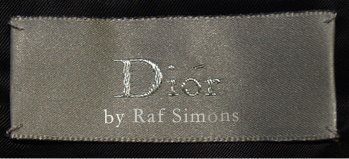Why not repurpose the resources expended when putting a new designer at the head of an existing design company? The idea is to empower them by making the collection their own, even until they grow old and retire, much like for the designers who created these businesses. While the existence of the major luxury houses was made possible by Coco Chanel, Christian Dior, Yves Saint Laurent, Cristobal Balenciaga, their names now keep a kind of shadow over the design world. To take this approach would be a bigger gamble, maybe, and there might be some precious years in between where the decision makers, head hunters, chess players, don’t get it quite right (any designer at Paco Robanne since 1999) or it goes terribly wrong (John Galliano at Dior) later on, those seasons will either become undesired vintage, or the museum collection's rarest of all gems.
Dior by Raf Simons
Celine by Phoebe Philo
Louis Vuitton by Marc Jacobs
Hermès by Whoever’s-After-Lemaire?
Etc.
When I first made this suggestion to a friend, I was a bit more radical about it. (Ditch the Dior entirely and just call it Raf Simmons, for God’s sake) but the re-branding that would require is too momentous for any business, understandably. So simply change the label and change the attitude and expectations. Consumers will learn from us, if we show confidence, speak of longevity, and write reviews that show excitement and must-haveness.
And it really does get tiresome, the goings on back behind the scenes and in the board rooms and calculating the bottom line. If you consider the designer a commodity, they will feel it and want to leave. But, my theory is that if you treat the designer like the creative genius that he/she is (or that you must believe he/she to trust them at the helm in the first place) and give realistic goals and realistic critiques and surround them with a team who understand how to bring out the best in them and make the machine run smoothly, they will want to stay. And they will make you money. Premium salaries can be sedated a bit and drama and law suits can be avoided and this confusion that is a melting pot of lost identity, on the part of the designers and the brands, can instead begin to define new and pure distinguishing factors. Otherwise, once the lineage of all the houses begin to look the same, we'll just end up with more cross-referencing, more archive replicating, and more firing and more hiring (with ever elevating salaries and expenditures) if something doesn’t give.
Not to mention it is TOO much to have designers splitting their time between their own design businesses while also acting as the head designer or creative director for a major global brand. This can be 16 collections a year, give or take a couple of seasons, endless travel, and two teams to manage...it's just too much. The two can be one and the same: their own label, for all intents and purposes, and the major global brand.
Also, is it ridiculous to anyone else that the most common metaphor for this shuffling around is that of a children's game? Musical chairs is fun and all, but it's not an exciting spectator sport, especially when the game is rigged by those who have money on the outcome.
The most important things needed for this change:
New Main Labels. (I’ve already taken the liberty of creating a few. I’ll send the invoice later, thank you.) (So, Check.)
A handful of Designers who have proven themselves over and over again no matter the name on the roof over their head (Check.)
Design houses that want consistency in their image and trust in the loyalty of their customer (Check.)
The closest thing towards this new system would be the dramatic and controversial revamp of the Yves Saint Laurent label, now Saint Laurent, under Hedi Slimane (I was recently trying to find it under the ‘Y’s on Style.com…oh yes, the name had a face lift). There are so many different ways this brand redesign can occur, and the right designer with the right team could work a magic in the fashion landscape if we just let them create without restricting them. Phoebe Philo or Alber Elbaz could be considered close in second, as the Céline label, for example, was all but dead until she made it the most forward and coveted (and expensive) collection of the fashion season. Why in the world is it not called Céline by Phoebe Philo? And even if it’s not on the label, and she is much less in the public eye than, say, Alexander Wang, she certainly has come to personify the look that she creates each season.
If Ghesquiere had been able to make Balenciaga his own, the story might not have ended like this.
This does negate the prediction that the era of designer as celebrity coming to an end. But, for real, when the departure of a head designer from a luxury company is still making all the major headlines is this really going out of style?
Then again I could get behind that movement, too…We can talk about that later, though.
Either way, let's quit playing games.



